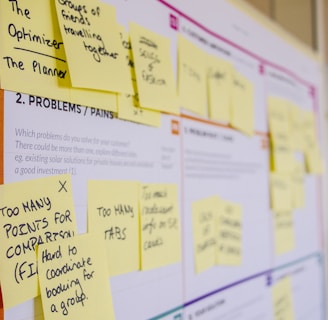discover, embed and empower your business with ai
Why Most AI Projects Fail — And How to Avoid the Trap
A recent MIT study revealed that 95% of generative AI pilots had little-to-no measurable impact on profit and loss. Clearly, the promise of AI often fails to translate into tangible results. So why is this happening?
william liu
9/16/20252 min read


AI is one of the most hyped technologies in business today, yet the majority of corporate AI projects don’t deliver. According to a 2025 S&P Global survey, 42% of companies abandoned most of their AI initiatives, a sharp rise from 17% the year before. Similarly, a recent MIT study revealed that 95% of generative AI pilots had little-to-no measurable impact on profit and loss. Clearly, the promise of AI often fails to translate into tangible results.
So why is this happening?
The main reason is simple: businesses rush into technology while overlooking the people and processes that make or break transformation. Too often, leaders are dazzled by the potential of AI tools and jump straight into building models or buying platforms. But without first defining the business problem, aligning stakeholders, and preparing staff for change, these projects struggle to gain traction.
Processes play a critical role. If existing workflows are inefficient or unclear, layering AI on top only automates the chaos. For example, using AI to speed up data entry won’t help if the underlying data management processes are broken. Likewise, a lack of governance or decision-making frameworks can mean that even when the technology works, teams don’t know how to apply it effectively.
The people side is equally important. Employees often see AI as a threat to their jobs, which can breed resistance. Without proper communication, training, and involvement, staff may ignore or actively undermine new systems. In many failed cases, the workforce was never consulted during project planning, leaving them disengaged from tools they were expected to use daily. Change management and adoption strategies are just as critical as the algorithms themselves.
In short, it's about aligning people, processes, and technology. In that order. Companies that focus on business outcomes first, empower teams, and design AI to fit seamlessly into workflows are the ones seeing real impact.
If your business is exploring AI, don’t let it become another statistic. Start with strategy, not software. Focus on building the right foundation, and the technology will follow.
Ready to unlock real business value with AI? Contact us today to explore how we can help you get it right.
Vrii consulting
Empowering SMEs through AI-driven solutions and strategies.
Contact
Focus
info@vriiconsult.com
© 2025. All rights reserved.